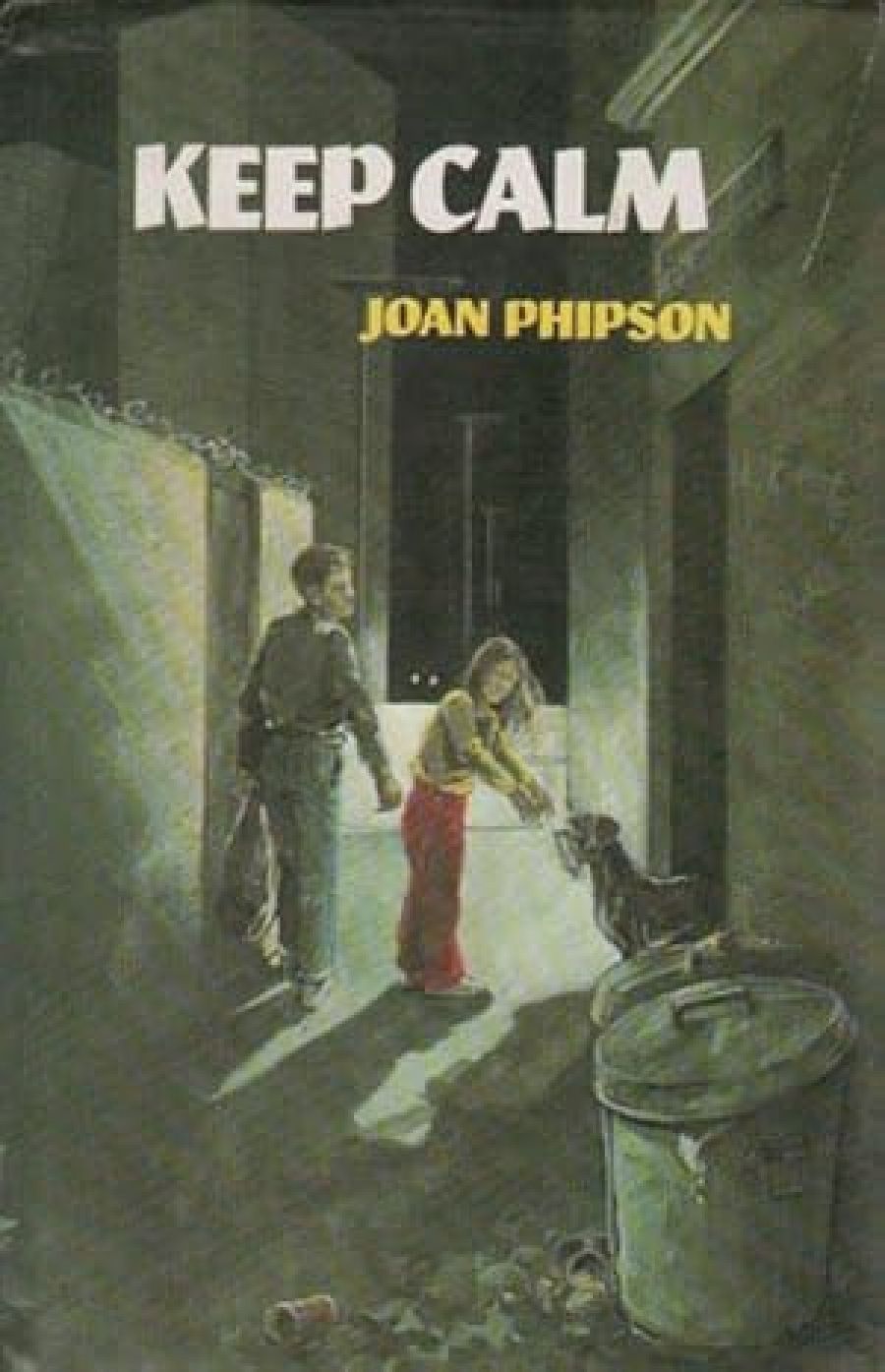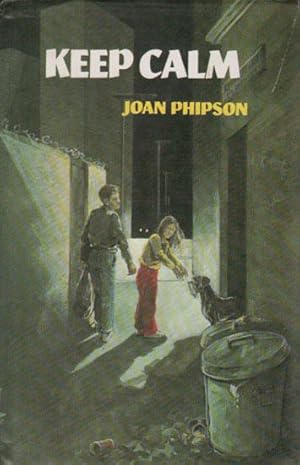
- Free Article: No
- Contents Category: Fiction
- Review Article: Yes
- Article Title: High Rise Calm in Crisis
- Online Only: No
- Custom Highlight Text:
Joan Phipson’s theme for her latest children’s book is acutely topical. Sydney is brought to a halt by a series of crippling strikes in protest against a proposed nuclear reactor for Botany Bay and, as power, water and all the essential utilities are withdrawn, the city becomes a wasteland.
- Book 1 Title: Keep Calm
- Book 1 Biblio: Macmillan Australia, 166pp., $8.95, ISBN 0 333 23840 0
- Book 1 Cover Small (400 x 600):

- Book 1 Cover (800 x 1200):

Nick Lorimer and his younger sister, Binkie, are left alone in a block of high rise flats as the strike begins – although the effects are already snowballing. Their mother is unconscious after a car accident and because of the general chaos the children are not able to be notified and cannot trace her. Nick, who relies heavily on authority figures, is unable to cope with her disappearance in a practical way and the author draws a very realistic portrait of the children’s fear and worry. As the situation worsens and people are being urged to leave the city for the country where everything is still reasonably normal, Nick is forced to assume the responsibility he has so long avoided. They set off across the city to their cleaning lady, Mrs Piggott, and her husband Jo, who gives the children and their friend Digby the feeling of adult stability that the Lorimer children so desperately need. But Jo is crippled and while he can develop their initiative and self-preservation he cannot physically protect them.
For anyone who knows Sydney, it is hard to imagine the place deserted and dangerous, but the atmosphere of foreboding and eeriness is well developed and highlighted in a couple of scenes. One is where she gives a graphic chiaroscuro description of a burglary in an antique shop, where we are forced to watch helplessly a violent mime. The other is a storm in Pitt Street when the children really see a storm, perhaps for the first time.
As they stepped into the wet street and felt the rain on their faces it seemed that the great city, the tall buildings and all the towering concrete erections of men had been picked up by the scruff of the neck, given a good shake and put down again. What was left of normal file was now permitted to go on as before.
The children and the Piggotts set off for the country, pulling Jo in a car trailer, trying to reach the highway in the hope of a lift. The city has become menacing and unnerving, everything that once was safe is now dangerous. Looting is rampant and the police are powerless to control it, food is scarce, communications are at a virtual standstill -it is every man for himself.
What had once been familiar and secure had suddenly become alien ground, every stranger must be presumed hostile. For perhaps the first time in their lives they knew what it felt like to walk in fear.
Even the park in which they camp overnight is starting to change, perhaps emphasising the fragility of man’s control over nature. It is now full of scavenging birds, overgrown grass and a hint that soon the gum trees could reclaim their territory. One wonders however if things could disintegrate quite so quickly.
The author’s portrayal of the varying human reactions to the emergency presumes that the natural instinct of humanity is survival, but that we all choose to survive in different ways. The dogs roaming the streets, the rats and birds scavenging off garbage; the looters making the most of the situation; even Anthea, the hitchhiker who accepts a lift with its presumed consequences, are all using their own resources for some kind of survival.
The point that most city people are ill-equipped for survival without the benefits of city living like electricity, petrol, communications, etc., is deftly made. Even Nick takes some time to work out that appliances cannot function without electricity. Jo sums it up:
When a city like this stops, you begin to notice things that were blocked out before. They think their city’s proof against anything. Well, it ain’t and now they’re learning.
Eventually they all make it to safety in the country (perhaps a little too quickly?), where nature is more in balance with man. But when things return to normal and they go back to the city, are they ever the same again? As Nick, with a new sense of reality remarks, ‘It’s nothing but an eggshell we’re living on’.


Comments powered by CComment